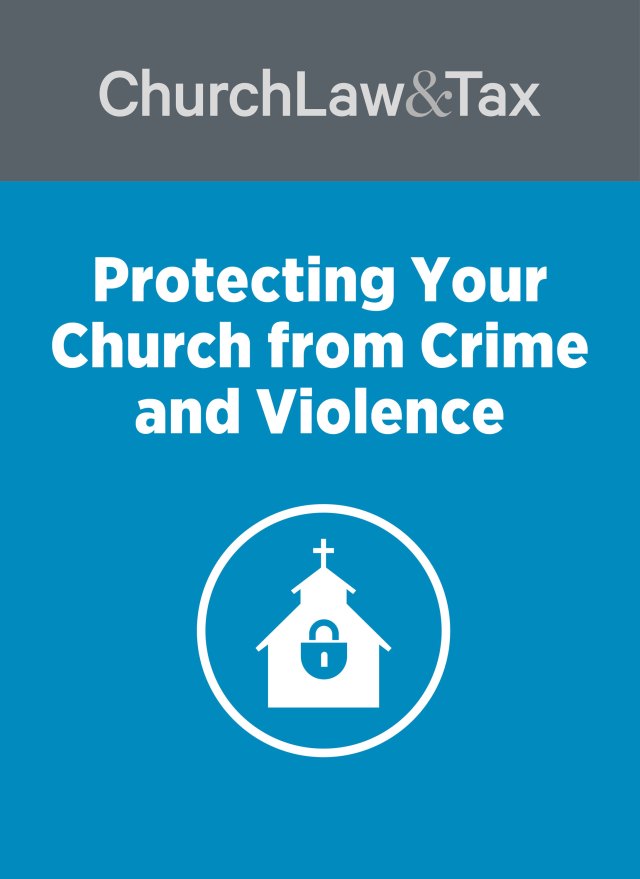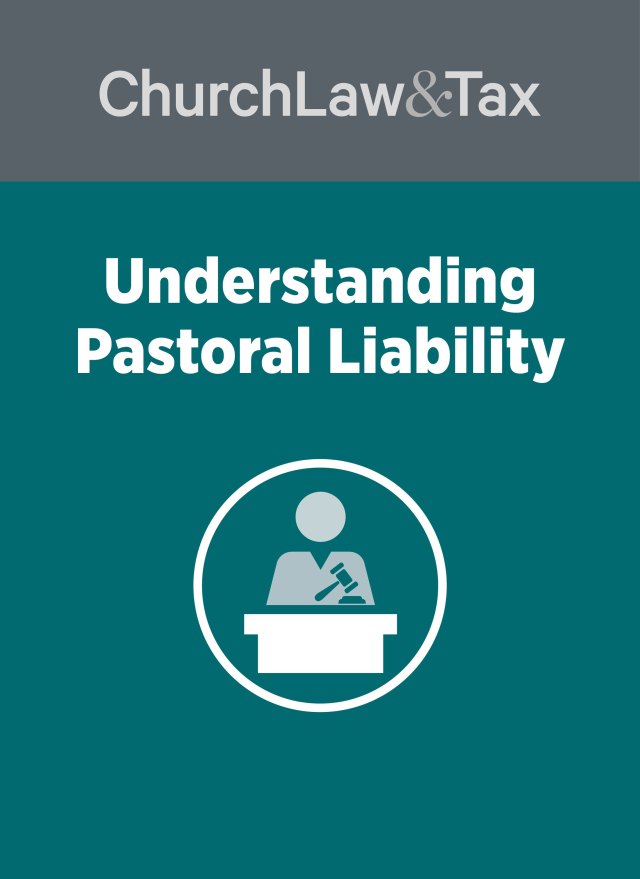Hernandez v. Hillsides, Inc., 97 Cal.Rptr.3d 274 (Cal. 2009)
Churches are experiencing embezzlement at an alarming rate. Sometimes, church leaders who suspect embezzlement install hidden video cameras in an attempt to identify the embezzler. A camera may be hidden in a room that is used by volunteers to count offerings, or it may be in the office of a church bookkeeper or other employee who is suspected of embezzling funds. Can the use of hidden cameras expose a church to liability for "invasion of privacy"? If so, how can this risk be reduced? These questions were addressed by the California Supreme Court in a recent case.
A California case. A nonprofit church-affiliated organization (the "employer") operated a residential facility for abused children, including the victims of sexual abuse. Many of the children had been exposed to or participated in child pornography.
The employer adopted a computer policy to prevent employees from using employer- provided computers in a manner that defamed, harassed, or harmed others, or that subjected the company to "significant legal exposure." Illegal and inappropriate activity was prohibited, such as accessing sexually offensive websites or displaying, downloading, or distributing sexually explicit material. The policy warned employees that they had "no reasonable expectation of privacy in any use of Company computers, network and system." Along the same lines, the policy advised that all data created, transmitted, downloaded, or stored on the system was the employer's property, and that it could "monitor and record employee activity on its computers, network and email systems," including "email messages, files stored or transmitted, and websites accessed."
Two employees (the "plaintiffs") shared an enclosed office and performed clerical work during daytime business hours. The employer's director learned that late at night, after plaintiffs had left the premises, an unknown person had repeatedly used a computer in plaintiffs' office to access the Internet and view pornographic websites. Such use conflicted with company policy and with the employer's aim of providing a safe haven for the children.
Concerned that the culprit might be a staff member who worked with children, and without notifying plaintiffs, the director set up a hidden camera in their office. The camera could be made operable from a remote location, at any time of day or night, to permit either live viewing or videotaping of activities around the targeted workstation. The camera was never operated during business hours, and, as a consequence, the plaintiffs' activities in the office were not viewed or recorded by means of the surveillance system. The director testified that his objective was to protect the children from any staff person who might expose them to pornography, emphasizing the harm they had endured before entering the facility.
The plaintiffs eventually discovered the hidden camera in their office, and sued their employer for invasion of privacy. The trial court dismissed the case, but a state appeals court ruled that the plaintiffs had a viable claim for invasion of privacy. The employer appealed to the California Supreme Court.
The court's decision. The court defined "invasion of privacy" as consisting of two elements:
- the defendant must intentionally intrude into a place, conversation, or matter as to which the plaintiff has a reasonable expectation of privacy, and
- the intrusion must occur in a manner highly offensive to a reasonable person.
- Assume that your employees have a reasonable expectation of privacy in their workspace, and that the use of hidden video cameras without notice may constitute an invasion of privacy for which the church may be liable in a court of law.
- An invasion of privacy occurs only if the employer's intrusion upon an employee's privacy would be highly offensive to a reasonable person. In deciding whether a particular intrusion meets this test the courts generally evaluate the reasonableness of the intrusion in terms of its place, duration, and scope, as well as the reasonableness of the employer's purpose or motivation in conducting the surveillance. An attorney can be invaluable in assisting your church in evaluating these factors.
- The risk of invasion of privacy is reduced if an employer provides employees with notice (in a policy, on posters, etc.) that its premises are being monitored with video cameras.
- Some states prohibit the use of hidden video cameras in the workplace. One state law makes it a crime to use "a concealed camcorder, motion picture camera, or photographic camera of any type, to secretly videotape, film, photograph, or record by electronic means, another, identifiable person who may be in a state of full or partial undress, for the purpose of viewing the body of, or the undergarments worn by, that other person, without the consent or knowledge of that other person, in the interior of a bedroom, bathroom, changing room, fitting room, dressing room, or tanning booth, or the interior of any other area in which that other person has a reasonable expectation of privacy, with the intent to invade the privacy of that other person." Cal. Penal Code § 647.
- Be aware of laws in your state that authorize civil liability and monetary damages for certain invasions of privacy that involve either a physical trespass or other offensive conduct for the purpose of capturing a picture of someone engaged in personal or familial activities.
- All states bar audio recordings of conversations without the consent of at least one party to the conversation. In several states, the consent of both parties is required. It is for this reason that surveillance cameras typically do not have the ability to record audio.
- Adopt a policy governing the disposal of video recordings to ensure that they are destroyed as soon as it is determined that no inappropriate activity was recorded.
- If a church's video camera reveals an employee misappropriating church funds, this evidence may be inadmissible in a criminal prosecution if its use would violate the Fourth Amendment's ban on unreasonable searches or seizures. While the Fourth Amendment does not directly apply to churches or other private employers, the United States Supreme Court has ruled that it may apply to the extent that the government aided or facilitated a particular search.
- The law often lags behind technological innovation. As a result, it is important for church leaders to be aware of legal developments in their state and at the federal level that directly or potentially affect the use of surveillance technology.
The court concluded that the plaintiffs established the first element, but not the second. As a result, it affirmed the trial court's dismissal of the case. The court's reasoning is helpful in evaluating the use of surveillance cameras.
(1) intrusion upon another's reasonable expectation of privacy
The court listed three factors to consider in deciding if an employer's intrusion upon an employee's privacy violates a reasonable expectation of privacy:
The first factor examines whether the employer deceived its employees regarding the identity of the person who secretly recorded conversations or activities. To illustrate, if an employer misleads employees into thinking that a person who secretly records their conversations or activities is a fellow employee, this will tend to support a finding of an invasion of privacy.
The second factor examines the extent to which other persons had access to the area that was surveilled, and could see or hear the person whose privacy was allegedly invaded. The plaintiffs insisted that they were provided with an enclosed office with a door that could be shut and locked, and window blinds that could be drawn, to allow the occupants "to obtain some measure of refuge, to focus on their work, and to escape interruptions from other sources, including their employer." The court agreed that "employees who retreat into a shared or solo office, and who perform work and personal activities in relative seclusion there, would not reasonably expect to be the subject of televised spying and secret filming by their employer."
The third factor examines the means by which the intrusion occurred. The court noted that hidden cameras and video recorders are highly intrusive, especially in settings that otherwise seem private. It noted that the "unblinking lens can be more penetrating than the naked eye with respect to duration, proximity, focus, and vantage point. Such monitoring and recording denies the actor a key feature of privacy—the right to control the dissemination of his image and actions. … The mere fact that a person can be seen by someone does not automatically mean that he or she can legally be forced to be subject to being seen by everyone."
The court concluded that the first element of invasion of privacy was met: "Plaintiffs had no reasonable expectation that their employer would intrude so tangibly into their semi-private office."
(2) the intrusion must occur in a manner highly offensive to a reasonable person
The court stressed that invasion of privacy requires proof of more than an intrusion upon reasonable privacy expectations. The intrusion also must be "highly offensive." In evaluating whether this requirement is met, the court pointed to two additional factors.
First, the "place, time, and scope" of the employer's video surveillance efforts must be considered. The court concluded that this factor "weighed heavily against a finding that the intrusion upon plaintiffs' privacy interests was highly offensive or sufficiently serious to warrant liability." It noted that the employer "took a measured approach in choosing the location to videotape the person who was misusing the computer system [and] its surveillance efforts were largely confined to the area in which the unauthorized computer activity had occurred." Finally, the employer's surveillance activities "were quite limited in scope [and occurred] only once a week for three weeks. Such measures were hardly excessive or egregious."
Second, to find that an intrusion upon another's privacy is highly offensive, a court must examine the employer's motives and justifications. This case "does not involve surveillance measures conducted for socially repugnant or unprotected reasons [such as] harassment, blackmail, or prurient curiosity." Further, the employer installed the video surveillance equipment in plaintiffs' office, and activated it three times after they left work, "in order to confirm a strong suspicion … that an unknown staff person was engaged in unauthorized and inappropriate computer use at night. Given the apparent risks under existing law of doing nothing to avert the problem, and the limited range of available solutions, the employer's conduct was not highly offensive for purposes of establishing an intrusion into private matters."
The court concluded:
We appreciate plaintiffs' dismay over the discovery of video equipment…Nothing we say here is meant to encourage such surveillance measures, particularly in the absence of adequate notice to persons within camera range that their actions may be viewed and taped. Nevertheless, considering all the relevant circumstances, plaintiffs have not established, and cannot reasonably expect to establish, that the conduct that is challenged in this case was highly offensive and constituted an egregious violation of prevailing social norms .…
What this means for churches
This case serves as a warning to church leaders that the use of hidden video cameras may expose a church to liability for invasion of privacy. But, it also demonstrates that in some cases the use of hidden cameras may be justifiable. Due to the potential risk involved in such cases, church leaders are advised to consult with legal counsel before making a decision to use such equipment. An attorney can assist church leaders in evaluating the many factors to be considered in evaluating the propriety of using such equipment. These factors include the following:


